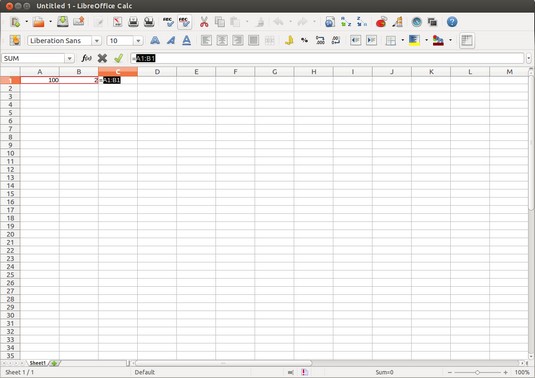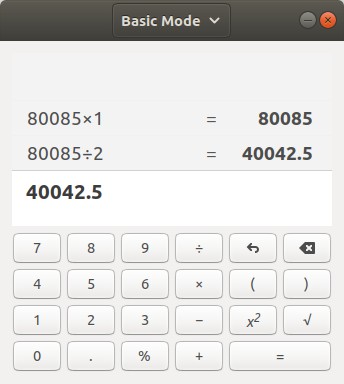Each Linux application is fairly intuitive to use. Although some nuances of the user interface may be new to you, you’ll become comfortable with the interface after using it a few times. This information briefly introduces the following applications, as well as some other commercially available office applications for Linux:
- LibreOffice Suite: A Microsoft Office–like office suite with the Writer word processor, the Calc spreadsheet program, the Impress presentation program, the Draw drawing and illustration application, and the Math mathematical-formula editor
- Kontact: A personal information management application in KDE
- Calculators: A GNOME calculator and KDE calculator
- Aspell: A spelling checker
LibreOffice.org office suite for Linux systems
LibreOffice.org is not only a website, but also an office suite similar to major office suites such as Microsoft Office. Its main components are the Writer word processor, the Calc spreadsheet, and the Impress presentation program.You can easily start LibreOffice.org — either the overall suite or an individual application — from most GUI desktops by clicking a panel icon or by making a choice from the main menu. In Ubuntu, you can click a desktop icon to open the initial window of the LibreOffice.org suite. You can create new documents or open existing documents (which can be Microsoft Office files as well) from the main window.
Writer for Linux
Choosing File → New → Text Document in any LibreOffice.org window starts LibreOffice.org Writer with a blank document in its main window. Using Writer is simple; if you’re familiar with Microsoft Word, you should have no trouble finding your way around Writer. You can type text in the blank document, format text, and save text.You can also open documents that you’ve prepared with Microsoft Word on a Windows machine.
 You can prepare documents in LibreOffice Writer.
You can prepare documents in LibreOffice Writer.
When you save a document, Writer saves it in LibreDocument text format by default, in a file with the .odt extension.
If you need to share Writer documents with Microsoft Word, you can save the documents in several formats, including Microsoft Word and Rich Text (.rtf) formats.
Calc for Linux
Calc is the spreadsheet program in the LibreOffice application suite. To start Calc, choose Spreadsheet in the Office category of the main menu or choose File → New → Spreadsheet in any LibreOffice window. Calc displays its main window, which is similar to that of Windows-based spreadsheets such as Microsoft Excel. (Calc can read and write Microsoft Excel–format spreadsheet files.)You use Calc the same way that you use Microsoft Excel. You can type entries in cells, use formulas, and format the cells (specifying the type of value and the number of digits after the decimal point, for example).
 Prepare your spreadsheets with LibreOffice Calc.
Prepare your spreadsheets with LibreOffice Calc.When preparing the spreadsheet, use formulas in the same format that you would in Microsoft Excel. Use the formula SUM(D2:D6) to add the entries from cell D2 to D6, for example. To set cell D2 as the product of the entries A2 and C2, type =A2*C2 in cell D2. To find out more about the functions available in LibreOffice.org Calc, choose Help → LibreOffice.org Help or (in newer versions) press F1 to open the LibreOffice.org Help window. Then browse the functions by category and click a function to read more about it.
To save the spreadsheet, choose File → Save As. A dialog box appears, where you specify the file format, the directory location, and the name of the file. When you save a document, by default, Calc saves it in LibreDocument spreadsheet format in a file with the .ods extension. LibreOffice.org Calc can save the file in several other formats, including Microsoft Excel (.xls and .xlsx), as well as text with comma-separated values (.csv).
If you want to exchange files with Microsoft Excel, save the spreadsheet in Excel format (choosing an appropriate version), transfer that file to a Windows system, and open it in Excel.
Impress for Linux
Impress is similar to Microsoft PowerPoint; it allows you to create unique, creative slide presentations for a variety of purposes. To run Impress, choose Presentation in the Office category of the main menu or choose File → New → Presentation in any LibreOffice window.When you first open Impress, the program prompts you for the presentation style and template. To begin working, select Empty presentation, and click Create. To open an existing document, select the appropriate option in the Presentation Wizard, click Open, and select the presentation file you want to open. You can open Microsoft PowerPoint files in Impress.
 You can prepare presentations in LibreOffice Impress.
You can prepare presentations in LibreOffice Impress.The Impress window shows the first slide together with an outline view of the slides along the left side. The exact appearance depends on the document type and template you select. You can begin adding text and other graphic objects such as images, text, and lines to the slide.
To insert a new slide, choose Insert → Slide. A blank slide appears. Add text and graphics to that slide.
To save a presentation, choose File → Save. For new documents, you have to provide a filename and select the directory in which you want to save the file.
If you want to share the slides with someone who uses Microsoft PowerPoint, save the presentation in PowerPoint format.
Calendars for Linux systems
KDE comes with Kontact, an application that integrates existing KDE applications (such as the KMail mail reader and the KOrganizer calendar program) into a single graphical personal information manager. You can start Kontact from panel icons or the main menu. (The location of the menu entry depends on the Linux distribution.)When Kontact starts, it usually displays a summary window with information about new email messages, upcoming scheduled events, and more. You can explore each application by clicking its icon in the left pane of the Kontact window.
To add an event or appointment for a specific date and time, select the date from the calendar, double-click the time, and type a brief description of the appointment in the New Event dialog box that appears. Click OK when you’re finished.
Calculators for Linux systems
You have a choice of the GNOME calculator or the KDE calculator. Both calculators are scientific, so you can use them for typical scientific calculations (such as square root and inverse) as well as trigonometric functions (such as sine, cosine, and tangent).To use the calculator, look for it in the Utilities or Accessories category of the main menu.
 Do your calculations in the KDE calculator.
Do your calculations in the KDE calculator.You can display additional buttons by choosing options from the Settings menu. Choose Settings → Statistic Buttons, for example, to show buttons that enable you to perform statistical calculations with the calculator.





